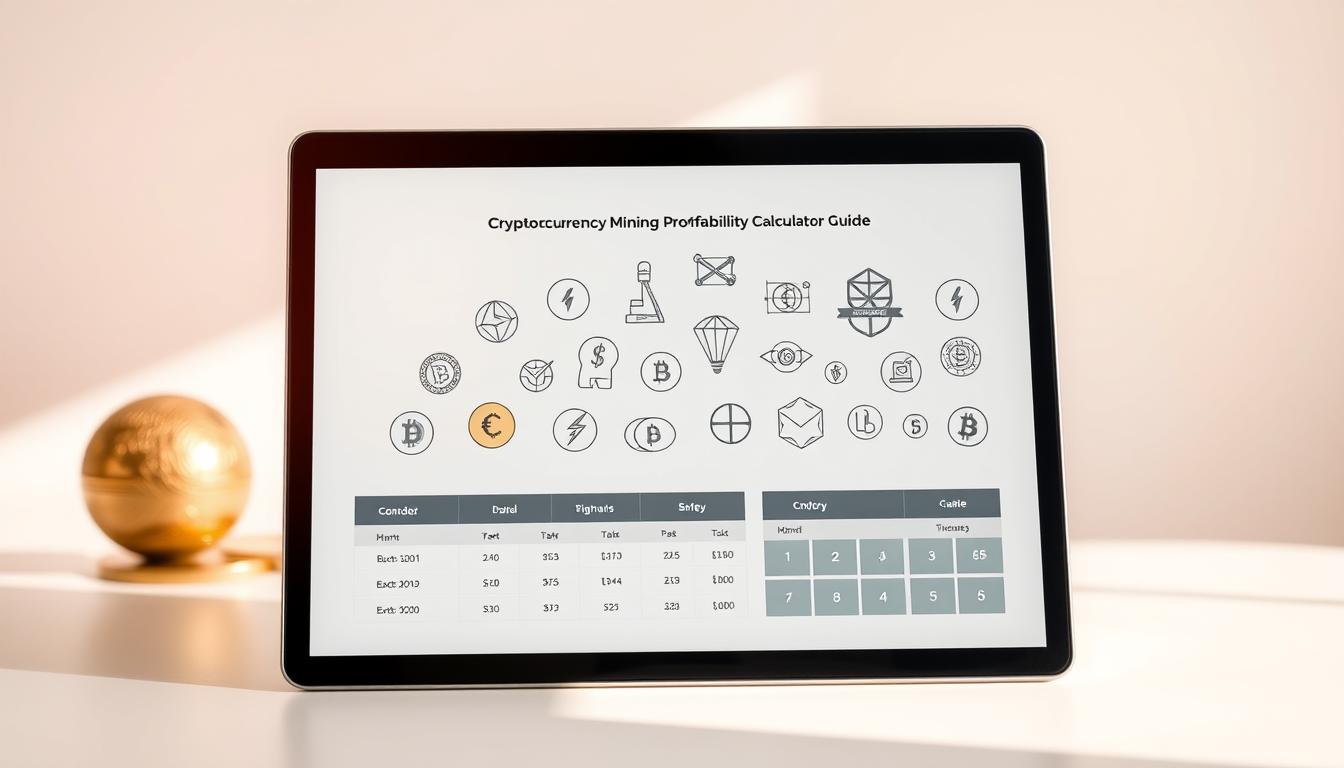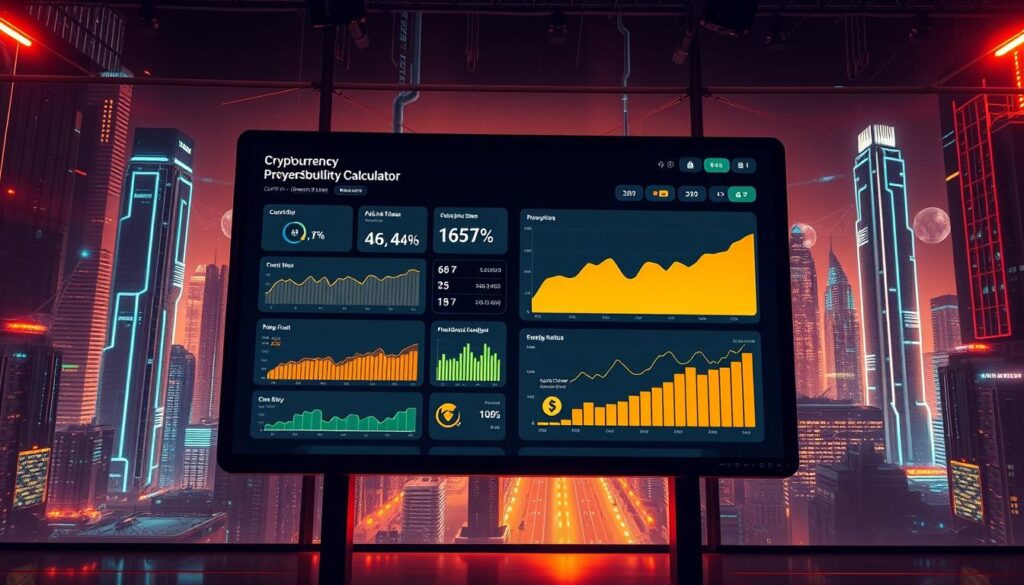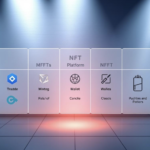Now Reading: The Ultimate Cryptocurrency Mining Profitability Calculator Guide
- 01
The Ultimate Cryptocurrency Mining Profitability Calculator Guide
The Ultimate Cryptocurrency Mining Profitability Calculator Guide

Modern crypto operations demand precision. With daily earnings fluctuating based on hardware specs, energy rates, and market shifts, mathematical accuracy separates thriving ventures from costly experiments. Advanced tools now provide real-time insights, like the $11.39 net profit example from a $20.05 daily yield after $8.66 power expenses.
Since 2013, specialized platforms have helped millions optimize their strategies. These systems track evolving variables – from Bitcoin’s network difficulty to next-gen ASIC miners consuming 7,215 watts at 390 TH/s. The leading calculator even forecasts 2025 hardware benchmarks, letting users simulate scenarios before investing.
Why does this matter? A 10% electricity hike or outdated hash rate data can erase margins overnight. By combining live market feeds with equipment specs, these tools map break-even points and ROI timelines. They’re not just number crunchers – they’re decision engines for a volatile industry.
Key Takeaways
- Real-time calculations prevent costly oversights in dynamic markets
- Top tools integrate ASIC specs and future difficulty projections
- Energy costs often consume 40%+ of gross earnings
- 2025-ready platforms account for next-gen hardware efficiency
- Scenario testing reveals hidden risks in profit assumptions
Understanding Cryptocurrency Mining Basics
Digital ledger security relies on decentralized verification systems. Participants called miners use specialized hardware to maintain blockchain integrity. Their work ensures every transaction gets validated without centralized oversight.
What Is Blockchain Validation?
Miners solve complex equations to add new blocks of transactions to the chain. Each solution requires trillions of guesses per second—Bitcoin’s network currently handles 1,076 exahashes (EH/s). Successful validators earn 3.125 BTC per block reward, plus transaction fees.
This process adjusts automatically every 2,016 blocks (~2 weeks). The mining difficulty rises or falls based on total computational power. This keeps block creation steady at 10 minutes, even as more miners join.
Essential Metrics Explained
Hashrate measures a miner’s speed in solving equations. Higher values increase reward chances but demand more energy. Most operations now join mining pools like AntPool or F2Pool, sharing resources and splitting earnings.
Pool fees range 1-4%, while block rewards halve every four years. Current difficulty sits at 136 trillion—a number that reflects global competition. Solo mining rarely pays off today, making pooled efforts the practical choice for consistent returns.
How Cryptocurrency Mining Affects Profitability
Digital asset operations live or die by shifting equations. Every 10 minutes, the system recalibrates competition levels to match global computing power. Recent data shows the current validation complexity at 136 trillion – a figure that reshapes earnings potential overnight.

Balancing Act: Validation Complexity and Incentives
The network self-adjusts every 2,016 blocks to maintain steady transaction processing. When more power joins, the required computational effort spikes. This mechanism prevents congestion but squeezes margins for outdated equipment.
Reward structures add another layer. Every four years, the system slashes block incentives by 50% – last occurring in 2020. Next reduction drops payouts to 1.5625 BTC, pushing operations toward fee-based income. During peak activity, transaction charges contribute over 30% of total earnings.
Market swings create ripple effects. Rising asset values attract new participants, driving validation complexity upward. Conversely, price drops trigger equipment shutdowns, easing pressure on active miners. Smart operators monitor these cycles to time hardware upgrades and energy purchases.
Three factors separate sustainable operations from temporary ventures:
- Real-time tracking of network adjustments
- Equipment efficiency relative to current standards
- Strategic response to market-driven participation shifts
How the Cryptocurrency Mining Profitability Calculator Works
Advanced computational tools transform raw operational data into actionable insights. These systems apply precise formulas to evaluate potential earnings, balancing hardware capabilities against ever-changing network conditions. The core equation calculates daily output:

Input Variables and Their Impact
Seven factors determine results:
- Hash power: Measured in terahashes (TH/s), this dictates how quickly your hardware solves equations
- Energy draw: Watts consumed directly affect operating costs
- Electricity rates: Regional power prices per kWh create dramatic profit variations
Pool charges typically deduct 2.5% from rewards, while network complexity adjusts every 2,016 blocks. A 10% fee increase could erase $1,200 annually from a mid-sized operation.
Realtime Data and Default Settings
Leading platforms refresh Bitcoin’s price and validation metrics every 90 seconds. Default assumptions include:
- Current block incentive of 3.125 BTC
- Average transaction fees
- Stable hardware performance
Advanced modes let users simulate equipment aging, seasonal power rate changes, and maintenance costs. Results display across multiple timelines – from hourly estimates to five-year projections – with clear breakdowns of gross revenue versus net gains.
Remember: These tools provide snapshots, not guarantees. A 15% difficulty spike or 20% price drop can radically alter outcomes. Regular data updates and scenario testing ensure informed decisions in volatile markets.
Selecting Optimal Mining Hardware and Setups
Equipment choices make or break modern validation operations. Three next-gen machines dominate efficiency comparisons: MicroBT’s hydro-cooled model, Bitmain’s streamlined unit, and Canaan’s cost-effective alternative. Each balances raw power with energy demands differently.
Breaking Down Performance Metrics
The MicroBT M63S Hydro 390T leads with 390 TH/s output but requires 7,215 watts. Bitmain’s S21 Hydro uses 26% less power for 335 TH/s, while Canaan’s air-cooled A1466I needs 3,315 watts for 170 TH/s. Watts-per-terahash ratios reveal true efficiency.
Hydro systems excel in sustained performance despite higher upfront costs. Air-cooled units risk thermal throttling during extended runs. Newer ASIC generations slash energy needs by 40% compared to 2020 models.
Operators must weigh initial investments against long-term savings. A $13,699 machine might pay off faster than budget options if local electricity rates exceed $0.12/kWh. Always cross-reference hash rates with regional power costs before purchasing.
Pro tip: Calculate break-even points using each machine’s efficiency rating. This prevents costly mismatches between hardware capabilities and operational realities.














